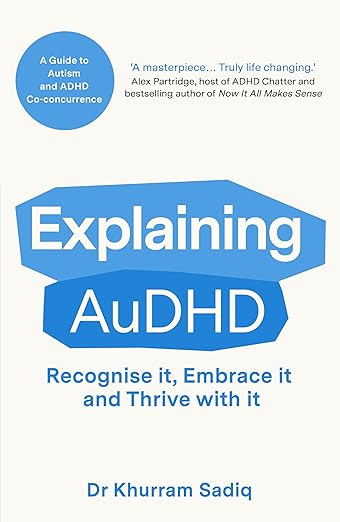There is a growing conversation happening in neurodivergent spaces. What if autism and ADHD are not just coexisting conditions, but different expressions of the same underlying neurotype?
Not identical. But maybe not as separate as we have been told.
The comorbidity statistics are hard to ignore. Between fifty and seventy percent of autistic people are also diagnosed with ADHD, and the overlap goes the other way too. For those of us who are both, who live in that tangled, overlapping middle, the distinction often feels arbitrary. Like trying to separate purple paint back into red and blue.
This is not about collapsing identities or ignoring important differences. It is about asking better questions. Why do so many of us tick both sets of boxes? Why do the traits blend and contradict in such consistent, confusing ways? Why does the current system struggle to describe what we live every day?
From Co-Occurrence to Continuum
Until 2013, it was not even possible to be diagnosed with both autism and ADHD. The DSM did not allow it. That means decades of research were built on the idea that these conditions could not coexist, which shaped the tools, assumptions, and stereotypes we still see today.
More recent research is shifting that view. Some experts now propose that ADHD and autism might sit on a broader neurodevelopmental spectrum. That they share common neurological roots. That rather than being two separate conditions that frequently occur together, we might be looking at a complex, dimensional profile that shows up differently depending on the individual.
Dr Khurram Sadiq, a consultant psychiatrist and author of Explaining AuDHD, puts it like this:
“When autism meets ADHD, it is a curious form of alchemy. There is no such thing as a perfect fifty fifty split.”
And:
“The paradoxes of AuDHD can camouflage each other or, on the surface at least, cancel each other out. This is why some people with AuDHD experience missed or incorrect diagnoses.”
These paradoxes do not just confuse clinicians. They confuse us too.
What It Feels Like From the Inside
Living with AuDHD does not feel like having two distinct diagnoses. It feels like contradiction layered over contradiction. A brain that wants routine and novelty, stillness and stimulation, connection and solitude.
It is:
- Better than average social skills driven by ADHD masking, followed by full body exhaustion
- Hyperfocuses that come and go, but special interests that take the long road until they do not
- A strong sense of justice from childhood that had to be buried to fit in
- Talking too much in meetings, seeming confident while spiralling inside
- Being sensitive to everything but unable to stop seeking more input
- Shutting down or melting down without warning, without language, without a graceful exit
We are often seen as inconsistent or high functioning. But that is just the surface. Underneath is a brain doing constant damage control in a world that was not built for it.
The Trouble with Labels
Diagnostic labels can be helpful. They can even be life changing. But they are not perfect. Especially when they are still built around outdated ideas of what autism and ADHD are supposed to look like.
Many people are still being diagnosed with ADHD but not autism, or the other way around, even when both are clearly present. Gender stereotypes, parental input, clinician training, and insurance categories all play a role.
There is also the fact that most diagnostic tools are not designed to assess blended, masked adult presentations. Especially not in people who have had to perform functionality in order to survive.
So the question is not just whether you have both. It is whether our system even knows how to see both.
Does AuDHD Deserve Its Own Category?
Some people think so. Some do not. The truth is, this is still unfolding. But what is clear is that more and more of us are seeing ourselves not as split between two diagnoses, but as something more integrated. Not red plus blue. Just purple.
And maybe one day, we will stop needing to separate it out at all
Further Reading
If this post resonates with you, Dr Khurram Sadiq’s book is a great place to start:
Explaining AuDHD: A Guide to Autism and ADHD Co-occurrence

It is practical, insightful, and written by someone who genuinely understands the overlap. Check it out here.

